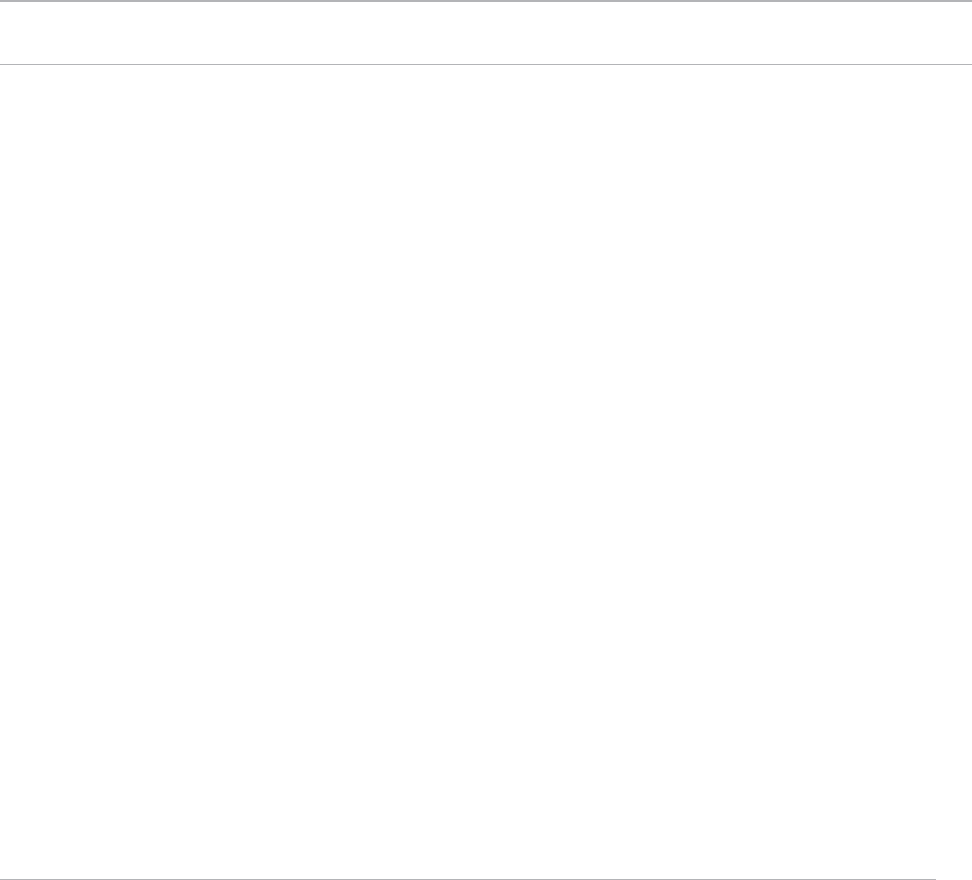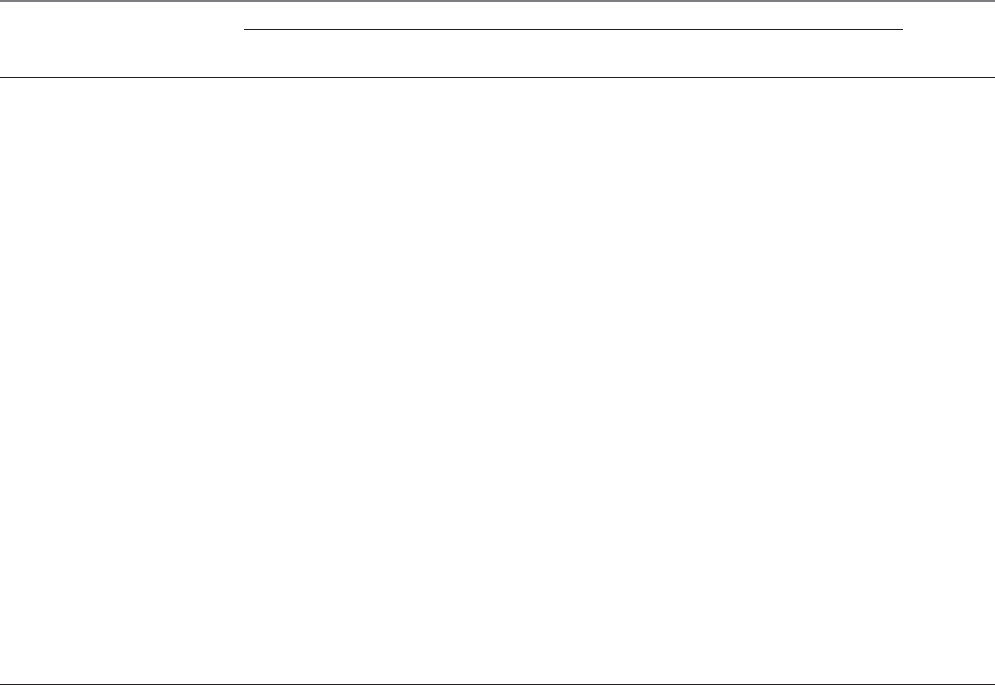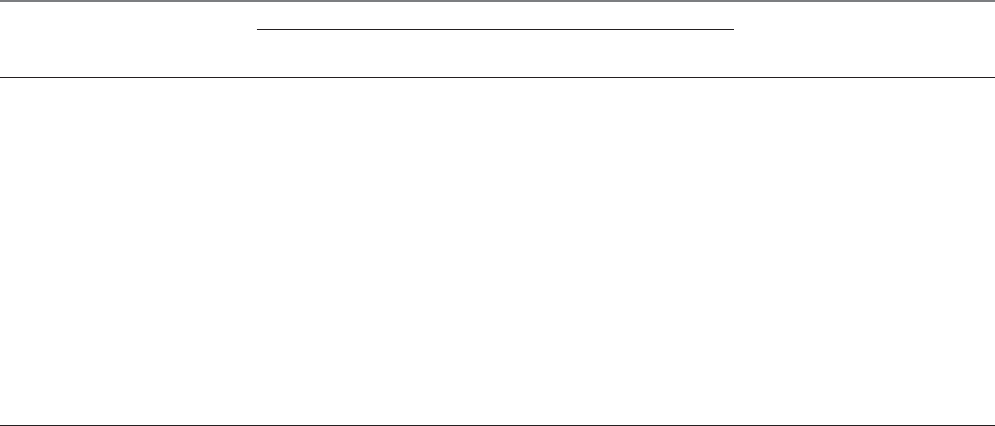
University of Nebraska - Lincoln
DigitalCommons@University of Nebraska - Lincoln
Public Health Resources Public Health Resources
2016
Varicella Vaccine Eectiveness in Preventing
Community Transmission in the 2-Dose Era
Dana Perella
Philadelphia Department of Public Health
Chengbin Wang
Centers for Disease Control and Prevention
Rachel Civen
Los Angeles County Department of Public Health
Kendra Viner
Philadelphia Department of Public Health
Karen Kuguru
Los Angeles County Department of Public Health
See next page for additional authors
Follow this and additional works at: h>p://digitalcommons.unl.edu/publichealthresources
=is Article is brought to you for free and open access by the Public Health Resources at DigitalCommons@University of Nebraska - Lincoln. It has
been accepted for inclusion in Public Health Resources by an authorized administrator of DigitalCommons@University of Nebraska - Lincoln.
Perella, Dana; Wang, Chengbin; Civen, Rachel; Viner, Kendra; Kuguru, Karen; Daskalaki, Irini; Schmid, D. Sco>; Lopez, Adriana S.;
Tseng, Hung Fu; Newbern, E. Claire; Mascola, Laurene; and Bialek, Stephanie R., "Varicella Vaccine E<ectiveness in Preventing
Community Transmission in the 2-Dose Era" (2016). Public Health Resources. 447.
h>p://digitalcommons.unl.edu/publichealthresources/447

Authors
Dana Perella, Chengbin Wang, Rachel Civen, Kendra Viner, Karen Kuguru, Irini Daskalaki, D. Sco> Schmid,
Adriana S. Lopez, Hung Fu Tseng, E. Claire Newbern, Laurene Mascola, and Stephanie R. Bialek
=is article is available at DigitalCommons@University of Nebraska - Lincoln: h>p://digitalcommons.unl.edu/
publichealthresources/447

ARTICLE
PEDIATRICS Volume 137 , number 4 , April 2016 :e 20152802
Varicella Vaccine Effectiveness
in Preventing Community
Transmission in the 2-Dose Era
Dana Perella, MPH,
a
Chengbin Wang, PhD,
b
Rachel Civen, MD, MPH,
c
Kendra Viner, PhD, MPH,
a
Karen
Kuguru, MPA,
c
Irini Daskalaki, MD,
a
D. Scott Schmid, PhD,
b
Adriana S. Lopez, MHS,
b
Hung Fu Tseng, PhD,
MPH,
d
E. Claire Newbern, PhD, MPH,
a
Laurene Mascola, MD, MPH,
c
Stephanie R. Bialek, MD, MPH
b
abstract
OBJECTIVES: We examined overall and incremental effectiveness of 2-dose varicella
vaccination in preventing community transmission of varicella among children aged 4 to
18 years in 2 active surveillance sites. One-dose varicella vaccine effectiveness (VE) was
examined in those aged 1 to 18 years.
METHODS: From May 2009 through June 2011, varicella cases identified during active
surveillance in Antelope Valley, CA and Philadelphia, PA were enrolled into a matched
case–control study. Matched controls within 2 years of the patient’s age were selected from
immunization registries. A standardized questionnaire was administered to participants’
parents, and varicella vaccination history was obtained from health care provider,
immunization registry, or parent records. We used conditional logistic regression to
estimate varicella VE against clinically diagnosed and laboratory-confirmed varicella.
RESULTS: A total of 125 clinically diagnosed varicella cases and 408 matched controls were
enrolled. Twenty-nine cases were laboratory confirmed. One-dose VE (1-dose versus
unvaccinated) was 75.6% (95% confidence interval [CI], 38.7%–90.3%) in preventing
any clinically diagnosed varicella and 78.1% (95% CI, 12.7%–94.5%) against moderate or
severe, clinically diagnosed disease (≥50 lesions). Among subjects aged ≥4 years, 2-dose
VE (2-dose versus unvaccinated) was 93.6% (95% CI, 75.6%–98.3%) against any varicella
and 97.9% (95% CI, 83.0%–99.7%) against moderate or severe varicella. Incremental
effectiveness (2-dose versus 1-dose) was 87.5% against clinically diagnosed varicella and
97.3% against laboratory-confirmed varicella.
CONCLUSIONS: Two-dose varicella vaccination offered better protection against varicella from
community transmission among school-aged children compared with 1-dose vaccination.
a
Philadelphia Department of Public Health, Philadelphia, Pennsylvania;
b
Centers for Disease Control and
Prevention, Atlanta, Georgia;
c
Los Angeles County Department of Public Health, Los Angeles, California; and
d
Southern California Permanente Medical Group, Kaiser Permanente, Pasadena, California
Ms Perella, Dr Wang, Dr Viner, Dr Daskalaki, Dr Schmid, Ms Lopez, Dr Newbern, and Dr Bialek
conceived and designed the initial study protocol for implementation in Philadelphia, PA.
Dr Civen, Ms Kuguru, Dr Tseng, and Dr Mascola adapted and revised the protocol for
implementation in Antelope Valley, CA. Ms Perella, Dr Viner, and Dr Daskalaki coordinated
and supervised data acquisition in Philadelphia, and Dr Civen, Ms Kuguru, and Dr Tseng were
responsible for these activities in Antelope Valley. Dr Wang, Ms Perella, Dr Viner, and Ms Kuguru
analyzed the study data, and all authors contributed to the interpretation of study analyses for
the manuscript. Ms Perella, Dr Wang, and Dr Bialek drafted the manuscript. All authors critically
revised the manuscript's content and approved the fi nal manuscript as submitted.
To cite: Perella D, Wang C, Civen R, et al. Varicella Vaccine Effectiveness
in Preventing Community Transmission in the 2-Dose Era. Pediatrics.
2016;137(4):e20152802
WHAT’S KNOWN ON THIS SUB JECT: Declines in varicella
incidence since 2006 and vaccine effectiveness estimates
from outbreak investigations indicate that 2-dose
varicella vaccination provides improved protection
against varicella. Limited data exist on the performance
of 2-dose varicella vaccination in preventing community
transmission outside outbreak settings.
WHAT THIS STUDY ADDS: Two-dose varicella vaccination
improved protection against community transmission of
varicella among school-aged children in 2 geographically
and demographically diverse areas compared with 1-dose
vaccination. Our study provides more direct evidence on
the protective effect of a 2-dose varicella vaccine regimen.
This document is a U.S. government work and
is not subject to copyright in the United States.
PERELLA et al
Between 1995 and 2005, the 1-dose
varicella vaccination program in
the United States greatly reduced
varicella incidence, hospitalizations,
and deaths.
1–4
However, between
2001 and 2006, varicella outbreaks
in school settings with high 1-dose
vaccination coverage (>80% among
students without varicella history)
continued to be reported.
5–11
Clinical
trial data had demonstrated that the
immune response produced 6 weeks
after 2-dose varicella vaccination
was 12 times higher than levels after
1-dose vaccination, which translated
into a threefold reduction in
breakthrough varicella over a 10-year
period.
12
Therefore, in 2006 the
Advisory Committee on Immunization
Practices recommended
implementation of a routine 2-dose
varicella vaccination program for
children aged 4 to 6 years.
13
Declines in varicella incidence
reported since 2006 along with
varicella vaccine effectiveness
(VE) estimates from a case–control
study conducted as part of active
surveillance of outbreaks in West
Virginia indicate that the 2-dose
regimen provides improved
protection against varicella.
14–18
However, limited field data exist
on the performance of a 2-dose
varicella vaccination program in
preventing community transmission
other than in outbreak settings that
may underestimate the true vaccine
effectiveness.
18, 19
A community-based
case–control study in Connecticut
found 2-dose varicella VE was 98.3%,
but no 2-dose cases were identified
in the study.
20
As this study
demonstrates, obtaining precise 2-dose
varicella VE estimates is challenging
because of the lower varicella
incidence in the 2-dose era, particularly
among recipients of both doses.
To evaluate the 2-dose varicella
VE, we conducted a matched
case–control study to examine
the overall and incremental VE of
the 2-dose varicella vaccination
regimen in preventing varicella
among school-aged children (4–18
years) in 2 geographically and
demographically diverse areas under
active surveillance for varicella.
Secondary study objectives were
to estimate 1-dose VE among
children aged 1 to 18 years during
the 2-dose era and determine risk
factors associated with breakthrough
varicella among 2-dose recipients.
METHODS
Study Population and Setting
From May 2009 through June
2011, investigators from Antelope
Valley (AV) and West Philadelphia
Varicella Active Surveillance Project
(VASP) conducted this matched
case–control study in collaboration
with the Centers for Disease Control
and Prevention (CDC). Institutional
review boards at all 3 participating
institutions approved the study
protocol. The target populations for
case and control subject recruitment
were residents aged 1 to 18 years
from AV and Philadelphia. AV spans
~2200 square miles of northern Los
Angeles County and has a population
of >370 000 residents.
21
Philadelphia
is a large and densely populated
metropolis with 1.5 million
residents.
22
During the study, the
majority of AV residents <20 years
of age were either Hispanic (51%) or
non-Hispanic white (30%).
21
Among
those of same age in Philadelphia,
48% were non-Hispanic black, 28%
were non-Hispanic white, and only
16% were Hispanic.
22
Case Recruitment
In AV and Philadelphia, varicella
cases were identified prospectively
through population-based active
surveillance methods. More than 300
participating community-based sites
(eg, schools, health care provider
offices) in each surveillance area
reported suspected varicella cases or
informed project staff that no cases
occurred at their facility biweekly.
15,
23
During the 2010 to 2011 academic
year, active surveillance was
expanded from West Philadelphia
to include an additional 232
schools that were located in other
areas of Philadelphia. Eligible case
subjects in Philadelphia were also
identified through citywide passive
surveillance. All case reports were
investigated with the standardized
VASP questionnaire.
15, 23
After investigation, a case subject
was defined as a person residing in
AV or Philadelphia with no previous
history of varicella and acute onset
of a diffuse maculopapulovesicular
rash or, for previously vaccinated
people, modified maculopapular
rash with few or no vesicles that
a medical provider definitively
diagnosed as varicella without any
other apparent cause.
15, 24
In May
2009 through July 2010, enrollment
was limited to children aged 5 to 14
years with laboratory confirmation
of varicella-zoster virus (VZV) by
polymerase chain reaction (PCR)
testing. During August 2010 through
June 2011, enrollment was expanded
to include people 1 to 18 years
of age with laboratory or clinical
diagnosis of varicella by a health care
provider. Laboratory confirmation
was expanded to include positive
VZV-specific PCR, direct fluorescent
antibody assay, or culture results.
Control Selection
Control subjects were selected from
the Kaiser Permanente Southern
California membership database
and the Philadelphia Department of
Public Health’s Kids Immunization
Database/Tracking System
registry in AV and Philadelphia,
respectively. Kaiser Permanente
Southern California, an integrated
health care system, provides
comprehensive health services
to 30% of AV residents aged 1 to
19 years; vaccine administration
data for its members are stored in
the Kaiser Immunization Tracking
System and include information
on vaccine doses administered by
2
PEDIATRICS Volume 137 , number 4 , April 2016
providers inside and outside the
Kaiser network or verified through
school or provider records for
vaccinations given before enrollment.
Kaiser Permanente also was an active
surveillance reporting site in AV. The
Philadelphia Department of Public
Health immunization registry has
used health department birth records
and vaccine administration reporting
from health care providers to
establish and maintain immunization
records for all children aged ≤6
years in Philadelphia since 1995. The
registry expanded to include children
aged ≤18 years in 2007.
For each varicella case identified
that met study inclusion criteria,
we selected potential controls using
incidence density sampling by
extracting age-matched (±2 years)
records for all children from the pool
of eligible controls aged 1 to 18 years
who did not have a previous varicella
history documented in historic
surveillance data or immunization
registry.
25
A 2-year age range for
controls was chosen, because the
routine 2-dose varicella vaccination
recommendation spans ages 4 to 6
years.
13
Moreover, because routine
1-dose coverage reached higher
levels (>80%), protection from
1-dose varicella vaccination appears
to remain consistent during the
first few years after vaccination.
13
Between 5 and 60 potential control
subjects were randomly selected
from the corresponding control pool
for each incident case. To be able to
analyze VE among the age groups for
which the first and second doses of
varicella vaccine are recommended,
controls selected for cases aged 1
to 3 years had to be <4 years of age,
and controls selected for cases ≥4
years of age had to be ≥4 years of
age. Study staff sent an invitation
letter and contacted parents or
guardians of eligible control subjects
via telephone. The first 3 eligible
respondents who consented to
participate were the controls for each
incident case. Recruited controls
were eligible to be controls for
subsequent incident cases, and if she
or he developed varicella at a later
time point, the subject was eligible
for the study as a case subject.
Data Collection
Study staff obtained verbal consent
and collected data from a parent or
guardian of each subject by telephone
by using a standard questionnaire.
Given limited study resources, we
did not recruit cases and controls
with non-English-speaking parents
or guardians who could not provide
consent because of the language
barrier. The questionnaires captured
information on demographics,
varicella vaccination history, recent
VZV exposures, underlying medical
conditions, and use of immune-
suppressing medications. The case
questionnaire, which has been
described previously, included
additional disease-specific questions
and standardized prompts to obtain
the number of lesions.
23
VASP staff
scheduled home visits to collect
lesion specimens from eligible cases
reported before their rashes had
resolved. The CDC National VZV
Laboratory performed PCR testing
26,
27
on lesion specimens collected
from suspected varicella cases. For
a few cases, VZV-specific testing was
conducted by hospital or commercial
reference laboratories. Participating
families received a $10–$20 gift
card after completion of study-
related activities, and AV health care
providers were offered a $20 gift
card for every case reported with
lesion specimens collected.
For case and control subjects,
varicella vaccination administration
dates were collected from the
registries used for control selection,
parental records, and the subject’s
health care provider. Study staff
made efforts to validate vaccination
information for all subjects with the
immunization registry or health care
provider records. If a discrepancy
existed between these 2 sources,
the source with the most complete
information (ie, highest number of
doses) was used. We considered
1-dose varicella vaccination to be
valid when given 4 days before a
child’s first birthday or later. Second-
dose varicella vaccination was
considered valid when administered
≥4 weeks after the first dose. The
last dose also needed to be given
>42 days before rash onset for cases
(breakthrough varicella) or the
matched incident case’s onset for
controls. Those given doses within 42
days were excluded.
Data Analysis
For our main analysis, we combined
data from both sites, because
varicella vaccine coverage and risk
for breakthrough varicella have not
differed between sociodemographic
subgroups,
13, 28
and the directions
of estimates from each site were
similar. We used 2 case definitions
for varicella: clinically diagnosed
and laboratory confirmed. Varicella
severity was categorized based on
the number of lesions reported as
mild (<50 lesions), moderate (50–500
lesions), or severe (>500 lesions).
The following VE estimates were
calculated to examine protection
against any varicella or moderate or
severe disease alone (≥50 lesions):
incremental 2-dose VE (2 doses
versus 1 dose), overall 2-dose VE
(2 doses versus unvaccinated), and
overall 1-dose VE (1 dose versus
unvaccinated). All VE estimates were
calculated with Greenwood and Yule’s
formula: VE = 1 − relative risk (RR).
19
In our study, RR refers to the risk
of developing varicella among the
subgroup with the higher number
of varicella vaccine doses compared
with the subgroup with fewer or no
doses and was estimated with an
odds ratio (OR) from conditional
logistic regression to account for the
matching variable (age). We were
able to adjust for other potential
confounders when examining VE
against clinically diagnosed disease
3

PERELLA et al
using the combined site data. Changes
in VE by time since vaccination (rash
onset date minus the date of most
recent varicella vaccination) were
calculated via previously described
methods.
25
The distribution of
categorical or continuous variables
between cases and controls was
examined with Mantel–Haenszel
χ
2
test, Fisher’s exact test, Mann–
Whitney U test, or Kruskal–Wallis test
where appropriate. All analyses were
conducted in SAS 9.3 (SAS Institute,
Inc, Cary, NC).
RESULTS
Case and Control Subject
Characteristics
A total of 125 clinically diagnosed
varicella cases and 408 matched
controls were enrolled. Of the
44 (35.2%) cases that had lesion
specimens tested for VZV, 29 were
laboratory-confirmed cases (all PCR
positive), 11 were PCR negative
(median lesion collection day: 5
[range: 2–21]), 2 had inadequate
specimens, and 2 were culture
negative. The median age of clinically
diagnosed cases was 2.1 years
among those aged <4 years and
9.5 years among those aged ≥4
years (Table 1). For each case, 2 to
7 matched controls (median = 3)
were recruited after we approached
a median of 5 (range: 5–15) and
29 (range: 5–60) eligible people in
AV and Philadelphia, respectively.
The distribution of demographic
characteristics did not differ
significantly between clinically
diagnosed case and control subjects,
except day care attendance among
those aged ≥4 years (P = .03). Most
controls aged ≥4 years from AV and
Philadelphia had received ≥1 dose of
varicella vaccine (98.8% vs 95.5%,
P = .05), and the majority in each
site had received 2 doses (78.5%
vs 83.6%, P = .31). Although the
proportion of vaccinated cases aged
≥4 years from each site was similar
(91% to 92%), the proportion of
cases aged ≥4 years who were 2-dose
recipients was slightly lower in AV
than Philadelphia (41.1% vs 59.5%,
P = .08).
Among clinically diagnosed cases
≥4 years of age, rash severity
and characteristics differed
significantly by vaccination status,
with the majority of breakthrough
cases reporting mild and mostly
4
TABLE 1 Demographic and Vaccination Characteristics of Clinically Diagnosed Varicella Case and Control Subjects From Philadelphia, Pennsylvania and
Antelope Valley, California, 2009–2011
a
Aged 1–3 y
Aged ≥4 y
Cases (n = 32),
n (%)
Controls (n = 103),
n (%)
P Cases (n = 93),
n (%)
Controls (n = 305),
n (%)
P
Median age 2.1 (1.0–3.9) 2.2 (1.1–3.9) .53 9.5 (4.0–18.9) 9.3 (4.1–18.9) .58
Surveillance site .68 .48
Antelope Valley, CA 9 (28.1) 33 (32.0) 56 (60.2) 171 (56.1)
Philadelphia, PA 23 (71.9) 70 (68.0) 37 (39. 8) 134 (43.9)
Vaccination status <.001 <.001
Unvaccinated 9 (28.1) 4 (3.9) 8 (8.6) 8 (2.6)
1-dose 22 (68.8) 98 (95.1) 40 (43.0) 50 (16.4)
2-dose 1 (3.1) 1 (1.0) 45 (48.4) 247 (81.0)
Race .09 .43
White 12 (37.5) 46 (44.7) 59 (63.4) 171 (56.1)
African American 9 (28.1) 40 (38.8) 25 (26.9) 95 (31.1)
Other 11 (34.4) 17 (16.5) 9 (9.7) 39 (12.8)
Ethnicity .18 .20
Hispanic 14 (45.2) 33 (32.0) 40 (43.0) 109 (35.7)
Non-Hispanic 17 (54.8) 70 (68.0) 53 (57.0) 196 (64.3)
Gender .41 .87
Male 16 (50.0) 60 (58.3) 47 (50.5) 157 (51.5)
Female 16 (50.0) 43 (41.7) 46 (49.5) 148 (48.5)
Born in United States >.999 >.999
Yes 31 (100.0) 103 (100.0) 91 (97.8) 296 (97.0)
No 0 (0.0) 0 (0.0) 2 (2.2) 9 (3.0)
Immunosuppressing condition >.999 >.999
Yes 0 (0.0) 0 (0.0) 0 (0.0) 2 (0. 7)
No 32 (100.0) 103 (100.0) 92 (100.0) 303 (99.3)
Asthma .99 .26
Yes 6 (18.8) 19 (18.6) 19 (20.4) 47 (15.5)
No 26 (81.3) 83 (81.4) 74 (79.6) 257 (84.5)
Attend day care .62 .03
Yes 13 (40.6) 47 (45.6) 6 (4.5) 47 (15.4)
No 19 (59.4) 56 (54.4) 87 (93.5) 258 (84.6)
a
Missing and unknown responses excluded. Valid percentages presented.

PEDIATRICS Volume 137 , number 4 , April 2016
maculopapular rashes, whereas
most unvaccinated cases had 50–500
lesions that were mostly vesicular
(Table 2). There was no severe
varicella among 2-dose cases. Only
2 cases had >500 lesions; both were
otherwise healthy adolescents, of
whom, 1 was a 1-dose recipient and
the other unvaccinated. None of
the cases were hospitalized due to
varicella or developed complications
of varicella. Among breakthrough
cases aged ≥4 years, 2-dose cases
were more likely to have rashes that
resolved in <1 week (P = .01) and
were less likely to have vesicular
rashes (P = .01) than 1-dose cases.
Presence and duration of fever did
not differ significantly between
breakthrough and unvaccinated
cases.
Varicella Vaccine Effectiveness
Among all unvaccinated and 1-dose
participants, the effectiveness
of 1-dose of varicella vaccine
compared with no vaccine was
75.6% (95% confidence interval
[CI], 38.7%–90.3%) against all
clinically diagnosed varicella and
78.1% (95% CI, 12.7%–94.5%)
against moderate or severe disease
(Table 3). The effectiveness of 2
doses of varicella vaccine compared
with no vaccine among subjects
aged ≥4 years was 93.6% (95% CI,
75.6%–98.3%) against all clinically
diagnosed varicella and 97.9% (95%
CI, 83.0%–99.7%) against moderate
or severe varicella. The incremental
effectiveness of 2-dose varicella
vaccination compared with 1-dose
among participants ≥4 years of age
was 87.5% (95% CI, 74.9%–93.7%)
in preventing any clinically diagnosed
varicella and 94.1% (95% CI, 72.4%–
98.8%) in preventing moderate or
severe clinically diagnosed disease.
VE estimates were higher but not
significantly in AV than Philadelphia.
Among subjects aged ≥4 years from
AV, 2-dose VE and incremental VE
against any clinically diagnosed
varicella were 98.4% and 92.4%,
respectively. In Philadelphia, 2-dose
VE and incremental VE among
subjects ≥4 years old were 92.7%
and 79.8%, respectively. Two-
dose VE estimates did not differ
significantly between sites (P =
0.20); however, the small number of
unvaccinated cases (≤5) and controls
(≤6) may have led to unstable VE
estimates by site.
Among the 26 laboratory-confirmed
cases aged ≥4 years and their
matched controls, 2-dose varicella VE
was 95.9% (95% CI, 23.2%–99.8%),
and incremental VE was 97.3% (95%
CI, 88.9%–100%). Because data
were sparse, we could not assess
effectiveness of 1-dose of varicella
vaccine against laboratory-confirmed
varicella.
Risk Factors for Breakthrough
Varicella Among 2-Dose Varicella
Vaccine Recipients
Among 2-dose varicella vaccine
recipients, there was no association
between time since receiving dose
2 and breakthrough varicella (P =
.17; Table 4). However, those who
received the second dose after 6
years of age were 60% less likely
to have breakthrough varicella
than those who had received the
second dose at an earlier age (P
= .009). A longer time interval
5
TABLE 2 Varicella Disease Severity by Vaccination Status for Clinically Diagnosed Varicella Case-Subjects Aged ≥4 y in Philadelphia, Pennsylvania and
Antelope Valley, California, 2009–2011
a
Varicella Vaccination Status Overall P 2- vs 1-Dose P
Unvaccinated (n = 8),
n (%)
1-Dose (n = 40), n (%) 2-Dose (n = 45),
n (%)
Rash severity
b
.01 .81
Mild (<50 lesions) 1 (12.5) 26 (65.0) 31 (68.9)
Moderate or severe (50–500 lesions) 6 (75.0) 13 (32.5) 14 (31.1)
Severe (>500 lesions) 1 (12.5) 1 (2.5) 0 (0.0)
Fever .36 .11
Yes 2 (25.0) 16 (41.0) 11 (24.4)
No 6 (75.0) 23 (59.0) 34 (75.6)
Most lesions are vesicular <.001 .01
Yes 3 (60.0) 9 (23.1) 2 (4.5)
No 2 (40.0) 30 (76.9) 42 (95.5)
Days of fever: median (IQR) 2 (0–3) 1.5 (1–2.5) 2 (1–2) .86 .57
Rash duration .01 .01
<1 wk (<7 d) 2 (25.0) 10 (25.6) 24 (53.3)
≥1 wk (≥7 d)
6 (75.0) 29 (74.4) 21 (46.7)
School missed .17 .89
≤1 school wk (≤5 d)
2 (33.3) 3 (8.6) 3 (7.7)
>1 school wk (>5 d) 4 (66.7) 32 (91.4) 36 (92.3)
IQR, interquartile range.
a
Missing and unknown responses excluded. Valid percentages presented.
b
Rash severity was defi ned as follows: <50 or the total number of spots could be counted in 30 s; 50–249 or you could place the child’s hand between the spots without touching a spot;
250–500 or you could not place a child’s hand between the spots without touching a spot; or >500 spots or the spots were so close you could hardly see normal skin.

PERELLA et al
between receiving 1- and 2-dose
varicella vaccine (>5 vs ≤5 years)
was associated with lower odds of
developing breakthrough varicella
(OR = 0.5, P = .03; Table 4). Subjects
receiving dose 2 after 6 years of age
were older than those receiving the
second dose varicella vaccine earlier
(12.7 vs 7.0 years, P < .001), as were
subjects with a time interval between
1- and 2-dose varicella vaccine >5
years compared with those having a
shorter interval between doses (13.0
vs 7.4 years, P < .001).
DISCUSSION
During the first 5 years after
implementation of 2-dose varicella
vaccination program, we found that
2 doses conferred significantly better
protection against varicella disease
from community transmission among
school-aged children compared with
the 1-dose regimen. By 2010, AV and
West Philadelphia reported >60%
2-dose varicella vaccination coverage
among 5-year old children and 67%
to 78% reductions in overall varicella
incidence since 2006.15 Our study
provides more direct evidence of
the protective effect of a 2-dose
regimen of varicella vaccine for
children. Incremental effectiveness
of the 2-dose varicella vaccination
regimen among all subjects aged
≥4 years was 88% to 97% against
all forms of disease and also highly
protective against moderate and
severe varicella (94%). The reduction
in community circulation of VZV
as a result of high 2-dose coverage
will also protect children who are
immunocompromised and not
eligible for varicella vaccination.
Additional benefits of routine
childhood varicella vaccination may
include reduced risk of herpes zoster
among vaccinated children.
29
In 2006, concerns about the
effectiveness of the 2-dose regimen
were raised after a varicella
outbreak in an Arkansas elementary
school with 97% 1-dose varicella
vaccination coverage and 41%
2-dose coverage.
30
Consistent
with our findings, incremental
effectiveness estimates from all but
1 subsequent outbreak investigation
and epidemiologic studies in the
United States have been much higher
(>90% vs 28% from the Arkansas
outbreak).
18, 20, 31, 32
Incremental
effectiveness estimates from school
varicella outbreak surveillance in
Indiana and West Virginia during
2009 to 2010 were 86% and 64%,
respectively.
18, 32
Among ~2800
patients who were recruited into a
prospective cohort study in 1995 at
2 years of age and received a second
dose through catch-up vaccination,
no cases of breakthrough varicella
were observed through 2009.
31
6
TABLE 3 Varicella VE Against All Varicella and Moderate or Severe Varicella in Philadelphia, Pennsylvania and Antelope Valley, California, 2009–2011
Unvaccinated and 1-Dose Participants
Regardless of Age
Participants ≥4 y Old
a
Cases Controls VE (95% CI) Cases Controls VE (95% CI)
n = 79 n = 160 n = 93 n = 305
VE against any clinically diagnosed
varicella
Unvaccinated 17 (21.5) 12 (7.5) Reference 8 (8.6) 8 (2.6) Reference
1-dose 62 (78.5) 148 (92.5) 75.6 (38.7–90.3) 40 (43.0) 50 (16.4) 49.1 (0–85.7)
2-dose — — — 45 (48.4) 247 (81.0) 93.6 (75.6–98.3)
Incremental VE (2-dose vs 1-dose) — — — — — 87.5 (74.9–93.7)
VE against moderate or severe
clinically diagnosed varicella (≥50
lesions)
n = 28 n = 49 — n = 35 n = 119 —
Unvaccinated 10 (35.7) 6 (12.2) Reference 7 (20.0) 5 (4.2) Reference
1-dose 18 (64.3) 43 (87.8) 78.1 (12.7–94.5) 14 (40.0) 20 (16.8) 64.2 (0–93.1)
2-dose — — — 14 (40.0) 94 (79.0) 97.9 (83.0–99.7)
Incremental VE (2-dose vs 1-dose) — — — — — 94.1 (72.4–98.8)
—, no value for category available.
a
Adjusted for ethnicity given signifi cant differences between cases and controls aged ≥4 y in Philadelphia. Although day care attendance differed between cases and controls aged ≥4 y,
only a small proportion of each group attended day care (<16%), and adding this variable to the model produced VE estimates similar to those presented.
TABLE 4 Risk Factors Associated With Breakthrough Varicella Among 2-Dose Varicella Vaccinees
Aged ≥4 y
Cases, n (%) (n = 45) Controls, n (%) (n = 247) OR (95% CI) P
Time since 2-dose varicella vaccination
<1 y 6 (13.3) 46 (18.6) Reference
1–3 y 19 (42.2) 118 (47.8) 1.2 (0.5–3.3) .67
>3 y 20 (44.4) 83 (33.6) 1.8 (0.7–4.9) .22
Age at receiving 2-dose varicella vaccine
≤6 y
33 (73.3) 128 (51.8) Reference
>6 y 12 (26.7) 119 (48.2) 0.4 (0.2–0.8) .009
Time interval between receiving 1- and 2-dose varicella vaccine
≤5 y
34 (75.6) 144 (58.3) Reference
>5 y 11 (24.4) 103 (41.7) 0.5 (0.2–0.9) .03
PEDIATRICS Volume 137 , number 4 , April 2016
Similarly, no 2-dose breakthrough
varicella cases were identified in a
community-based case–control study
conducted by Shapiro et al
20
between
2006 and 2010.
Given the excellent protection
provided by the 2-dose regimen in
preventing moderate and severe
disease, it is not surprising that the
majority of 2-dose breakthrough
cases (69%) had mild rashes
with <50 lesions, and none had
severe varicella. These findings
were consistent with 2-dose era
active surveillance data and other
epidemiologic studies.
15, 18, 20, 31
No
cases in our study were hospitalized
or fatal. Likewise, additional declines
in varicella-related hospitalizations
since implementation of the 2-dose
varicella vaccination era have also
been documented in the literature.
15,
33
Although there was no difference
in rash severity observed between
1- and 2-breakthrough cases,
average illness duration for 2-dose
breakthrough cases was slightly
shorter than for 1-dose cases, and
fewer 2-dose cases developed
mostly vesicular rashes. The shorter
duration of mild breakthrough illness
among 2-dose recipients may add
to the cost savings from use of this
regimen, and infectiousness may be
lowered, given the lower proportion
of vesicular rashes among 2-dose
breakthrough cases.
In our study and as reported by
others,
1, 18, 34
breakthrough varicella
generally has a modified appearance
with few or no vesicular lesions,
making it challenging to diagnose
clinically. PCR testing of lesion
specimens to detect VZV is highly
sensitive and specific.
35
However,
as demonstrated during the
investigation of a suspected varicella
outbreak in a Texas school district
in 2011, the utility of VZV-specific
PCR testing can be limited when
only macular lesions are present or
lesion specimens are not collected
early in the course of illness. In the
absence of better laboratory tools,
clinical and epidemiologic data will
remain necessary to support the
confirmation of varicella disease.
36
In
the Texas outbreak, the incremental
effectiveness of 2-dose varicella
vaccination against any form of
clinically diagnosed varicella varied
widely across the 2 involved schools
(21% and 72%).
36
We therefore
chose to examine 2-dose varicella VE
by using 2 different case definitions
for breakthrough varicella: one based
on clinical and epidemiologic criteria
and the other using laboratory
confirmation alone. Both definitions
produced similar estimates for
1-dose and 2-dose varicella VE when
unvaccinated people were used as
the comparison group. Although
incremental effectiveness against
laboratory-confirmed disease was
slightly higher compared with the
incremental effectiveness against
clinically diagnosed disease (97% vs
88%), both estimates demonstrate
that the 2-dose varicella vaccine
regimen is highly effective in
preventing varicella due to sporadic
VZV circulation in the community.
Data on risk factors for 2-dose
breakthrough varicella are limited.
Similar to Thomas et al,
18
we did not
find a significant association between
time since 2-dose vaccination and
the development of breakthrough
varicella; however, in both studies
findings may have been affected by
the low number of varicella cases
among 2-dose recipients. We were
surprised that those who were older
at time of 2-dose varicella vaccination
or had >5 years between dose 1
and dose 2 had lower likelihood
of breakthrough varicella. These
findings may reflect a lower risk of
VZV exposure or shorter exposure
durations among older subjects
in middle school and high school,
because they are less likely to spend
several hours with the same class of
students throughout the school day.
Our findings are subject to the
following limitations. Given high
1-dose varicella vaccine coverage
among children ≥4 years of age,
15
very few unvaccinated subjects
were identified, which resulted in
wide confidence intervals for our
estimates of varicella VE. Similarly,
the small number of laboratory-
confirmed 2-dose breakthrough
varicella cases limited our ability to
identify risk factors for or describe
the characteristics of breakthrough
disease in 2-dose vaccinees. Lastly,
although we used the best available
sources of case and control subjects
for our study, ascertainment of
mild varicella cases was probably
incomplete. The data source used
to identify controls in the Antelope
Valley area represented only
30% of the source population,
and the response rate among
potential controls selected from the
immunization registry was low in
Philadelphia because of incomplete
or outdated contact information.
Despite these potential limitations,
the distributions of demographic
characteristics (ie, gender, race, and
ethnicity) among control subjects
were similar to population estimates
for residents <18 years of age in
each site. In AV, 2-dose varicella
vaccination coverage was moderately
high (84%) among kindergarten
students during the 2009 to
2010 school year and 98% to 99%
among Kaiser members aged 5 to 6
years in 2010.
15
The use of Kaiser
members only as controls probably
did not affect 2-dose varicella
VE but may have resulted in slightly
higher incremental effectiveness
estimates.
With superior protection provided
by the 2-dose varicella vaccination
compared with the 1-dose regimen
as demonstrated in our study and
others, it will be important to expand
school immunization requirements to
include 2-dose varicella vaccination.
By 2012, 36 states had a 2-dose
varicella vaccination elementary
school entry requirement, and 2-dose
varicella vaccine coverage among
7

PERELLA et al
7-year-olds in 6 sentinel sites had
reached moderate to high levels
(79.9%–92.0%).
37
Catch-up varicella
vaccination will be particularly
important for 1-dose vaccinees at
increased risk for exposure to people
with varicella or herpes zoster (ie,
international travelers, health care
workers). Continued monitoring of
2-dose varicella VE is also warranted,
to ensure that protection is sustained
over time.
ACKNOWLEDGMENTS
We gratefully acknowledge the
following staff members from the
Philadelphia Department of Public
Health, the Los Angeles County
Department of Public Health, and
the Centers for Disease Control and
Prevention who contributed to the
study: Salini Mohanty, Christina
Jackson, Niya Spells, Michael
Borquez, Rodrerica Thermitus,
Elizabeth Taggert, Perri Alpay,
Kathryn Gevitz, Sabrina Chen,
Jimmy John, and Kay Radford.
We also acknowledge Dr Barbara
Watson for her guidance with
protocol development. Lastly, we
thank community-based sites in
Philadelphia, PA and Antelope
Valley, CA that participated in active
varicella surveillance during the
study period.
REFERENCES
1. Chaves SS, Zhang J, Civen R, et al.
Varicella disease among vaccinated
persons: clinical and epidemiological
characteristics, 1997–2005.
J Infect Dis. 2008;197(suppl 2):
S127–S131
2. Guris D, Jumaan AO, Mascola L, et al.
Changing varicella epidemiology in
active surveillance sites: United States,
1995–2005. J Infect Dis. 2008;197(suppl
2):S71–S75
3. Lopez AS, Zhang J, Brown C, Bialek S.
Varicella-related hospitalizations in the
United States, 2000–2006: the 1-dose
varicella vaccination era. Pediatrics.
2011;127(2):238–245
4. Marin M, Zhang JX, Seward JF. Near
elimination of varicella deaths in
the US after implementation of the
vaccination program. Pediatrics.
2011;128(2):214–220
5. Centers for Disease Control and
Prevention (CDC). Outbreak of varicella
among vaccinated children: Michigan,
2003. MMWR Morb Mortal Wkly Rep.
2004;53(18):389–392
6. Centers for Disease Control and
Prevention (CDC). Varicella outbreak
among vaccinated children: Nebraska,
2004. MMWR Morb Mortal Wkly Rep.
2006;55(27):749–752
7. Lopez AS, Guris D, Zimmerman L, et al.
One dose of varicella vaccine does not
prevent school outbreaks: is it time for
a second dose? Pediatrics. 2006;117(6).
Available at: www. pediatrics. org/ cgi/
content/ full/ 117/ 6/ e1070
8. Nguyen MD, Perella D, Watson B, Marin
M, Renwick M, Spain CV. Incremental
effectiveness of second dose varicella
vaccination for outbreak control at
an elementary school in Philadelphia,
Pennsylvania, 2006. Pediatr Infect Dis
J. 2010;29(8):685–689
9. Parker AA, Reynolds MA, Leung J,
et al. Challenges to implementing
second-dose varicella vaccination
during an outbreak in the absence
of a routine 2-dose vaccination
requirement: Maine, 2006. J Infect Dis.
2008;197(suppl 2):S101–S107
10. Tugwell BD, Lee LE, Gillette H, Lorber
EM, Hedberg K, Cieslak PR. Chickenpox
outbreak in a highly vaccinated school
population. Pediatrics. 2004;113(3 pt
1):455–459
11. Civen R, Lopez AS, Zhang J, et al.
Varicella outbreak epidemiology in an
active surveillance site, 1995–2005. J
Infect Dis. 2008;197(suppl 2):S114–S119
12. Kuter B, Matthews H, Shinefi eld H, et
al; Study Group for Varivax. Ten year
8
ABBREVIATIONS
AV: Antelope Valley
CDC: Centers for Disease Control
and Prevention
CI: confidence interval
OR: odds ratio
PCR: polymerase chain reaction
RR: relative risk
VASP: Varicella Active
Surveillance Project
VE: vaccine effectiveness
VZV: varicella zoster virus
The fi ndings and conclusions in this report are those of the authors and do not necessarily represent the offi cial position of the Centers for Disease Control and
Prevention, US Department of Health and Human Services, or the Philadelphia Department of Public Health.
DOI: 10.1542/peds.2015-2802
Accepted for publication Dec 21, 2015
Address correspondence to Dana Perella, MPH, Acute Communicable Disease Program, Philadelphia Department of Public Health, 500 S Broad St, 2nd Floor,
Philadelphia, PA 19146. E-mail: [email protected]
PEDIATRICS (ISSN Numbers: Print, 0031-4005; Online, 1098-4275).
Copyright © 2016 by the American Academy of Pediatrics
FINANCIAL DISCLOSURE: The authors have indicated they have no fi nancial relationships relevant to this article to disclose.
FUNDING: Supported by the American Recovery and Reinvestment Act (ARRA), Section 317 Immunization Program: Strengthening the Evidence Base Measuring
Effectiveness of Two Doses of Varicella Vaccine, U01 (RFA-IP04-11601ARRA09).
POTENTIAL CONFLICT OF INTEREST: The authors have indicated they have no potential confl icts of interest to disclose.
PEDIATRICS Volume 137 , number 4 , April 2016
follow-up of healthy children who
received one or two injections of
varicella vaccine. Pediatr Infect Dis J.
2004;23(2):132–137
13. Marin M, Güris D, Chaves SS, Schmid
S, Seward JF; Advisory Committee
on Immunization Practices, Centers
for Disease Control and Prevention
(CDC). Prevention of varicella:
recommendations of the Advisory
Committee on Immunization
Practices (ACIP). MMWR Recomm Rep.
2007;56(RR-4):1–40
14. Centers for Disease Control and
Prevention (CDC). Evolution of varicella
surveillance: selected states, 2000–
2010. MMWR Morb Mortal Wkly Rep.
2012;61(32):609–612
15. Bialek SR, Perella D, Zhang J, et al.
Impact of a routine two-dose varicella
vaccination program on varicella
epidemiology. Pediatrics. 2013;132(5).
Available at: www. pediatrics. org/ cgi/
content/ full/ 132/ 5/ e1134
16. Daly ER, Anderson L, Dreisig J,
Dionne-Odom J. Decrease in varicella
incidence after implementation of the
2-dose recommendation for varicella
vaccine in New Hampshire. Pediatr
Infect Dis J. 2013;32(9):981–983
17. Kattan JA, Sosa LE, Bohnwagner
HD, Hadler JL. Impact of 2-dose
vaccination on varicella epidemiology:
Connecticut—2005–2008. J Infect Dis.
2011;203(4):509–512
18. Thomas CA, Shwe T, Bixler D, et
al. Two-dose varicella vaccine
effectiveness and rash severity in
outbreaks of varicella among public
school students. Pediatr Infect Dis J.
2014;33(11):1164–1168
19. Chen RT, Orenstein WA. Epidemiologic
methods in immunization programs.
Epidemiol Rev. 1996;18(2):99–117
20. Shapiro ED, Vazquez M, Esposito D, et
al. Effectiveness of 2 doses of varicella
vaccine in children. J Infect Dis.
2011;203(3):312–315
21. Population Estimates: Walter R.
McDonald & Associates, Inc. (WRMA)
for Urban Research. Los Angeles
County ISD. 2009;2010(April):26
22. 2010 Population Estimates.
Philadelphia, PA: Claritas Inc.; 2010
23. Seward JF, Watson BM, Peterson
CL, et al. Varicella disease after
introduction of varicella vaccine in
the United States, 1995–2000. JAMA.
2002;287(5):606–611
24. Leung J, Harpaz R, Baughman A, et
al. Evaluation of laboratory methods
for diagnosis of varicella. J Infect Dis.
2010;202(10):1486–1491
25. Niccolai LM, Ogden LG, Muehlenbein
CE, Dziura JD, Vázquez M, Shapiro ED.
Methodological issues in design and
analysis of a matched case–control
study of a vaccine’s effectiveness. J
Clin Epidemiol. 2007;60(11):1127–1131
26. Loparev VN, McCaustland K, Holloway
BP, Krause PR, Takayama M, Schmid
DS. Rapid genotyping of varicella-
zoster virus vaccine and wild-type
strains with fl uorophore-labeled
hybridization probes. J Clin Microbiol.
2000;38(12):4315–4319
27. Loparev VN, Argaw T, Krause PR,
Takayama M, Schmid DS. Improved
identifi cation and differentiation of
varicella-zoster virus (VZV) wild-type
strains and an attenuated varicella
vaccine strain using a VZV open
reading frame 62-based PCR. J Clin
Microbiol. 2000;38(9):3156–3160
28. Estimated vaccination coverage
with 1+ varicella among children
19–35 months of age by state and
immunization action plan area.
National Immunization Survey.
Available at: www. cdc. gov/ vaccines/
imz- managers/ coverage/ nis/ child/
index. html. Accessed September 30,
2014
29. Weinmann S, Chun C, Schmid DS, et al.
Incidence and clinical characteristics
of herpes zoster among children in
the varicella vaccine era, 2005–2009. J
Infect Dis. 2013;208(11):1859–1868
30. Gould PL, Leung J, Scott C, et al. An
outbreak of varicella in elementary
school children with two-dose varicella
vaccine recipients: Arkansas, 2006.
Pediatr Infect Dis J. 2009;28(8):
678–681
31. Baxter R, Ray P, Tran TN, et al. Long-
term effectiveness of varicella vaccine:
a 14-year, prospective cohort study.
Pediatrics. 2013;131(5). Available at:
www. pediatrics. org/ cgi/ content/ full/
131/ 5/ e1389
32. Hazen D, Baker L. Vaccine effi cacy
estimates during institutional-based
outbreaks, Indiana 2010. In: 45th
National Immunization Conference.
Washington, DC; 2011
33. Baxter R, Tran TN, Ray P, et al. Impact
of vaccination on the epidemiology
of varicella: 1995–2009. Pediatrics.
2014;134(1):24–30
34. Watson BM, Piercy SA, Plotkin SA,
Starr SE. Modifi ed chickenpox in
children immunized with the Oka/
Merck varicella vaccine. Pediatrics.
1993;91(1):17–22
35. Weinmann S, Chun C, Mullooly JP,
et al. Laboratory diagnosis and
characteristics of breakthrough
varicella in children. J Infect Dis.
2008;197(suppl 2):S132–S138
36. Mahamud A, Wiseman R, Grytdal S,
et al. Challenges in confi rming a
varicella outbreak in the two-dose
vaccine era. Vaccine. 2012;30(48):
6935–6939
37. Lopez AS, Cardemil C, Pabst LJ, Cullen
KA, Leung J, Bialek SR; Division of
Viral Diseases; Centers for Disease
Control and Prevention (CDC). Two-
dose varicella vaccination coverage
among children aged 7 years: six
sentinel sites, United States, 2006–
2012. MMWR Morb Mortal Wkly Rep.
2014;63(8):174–177
9
